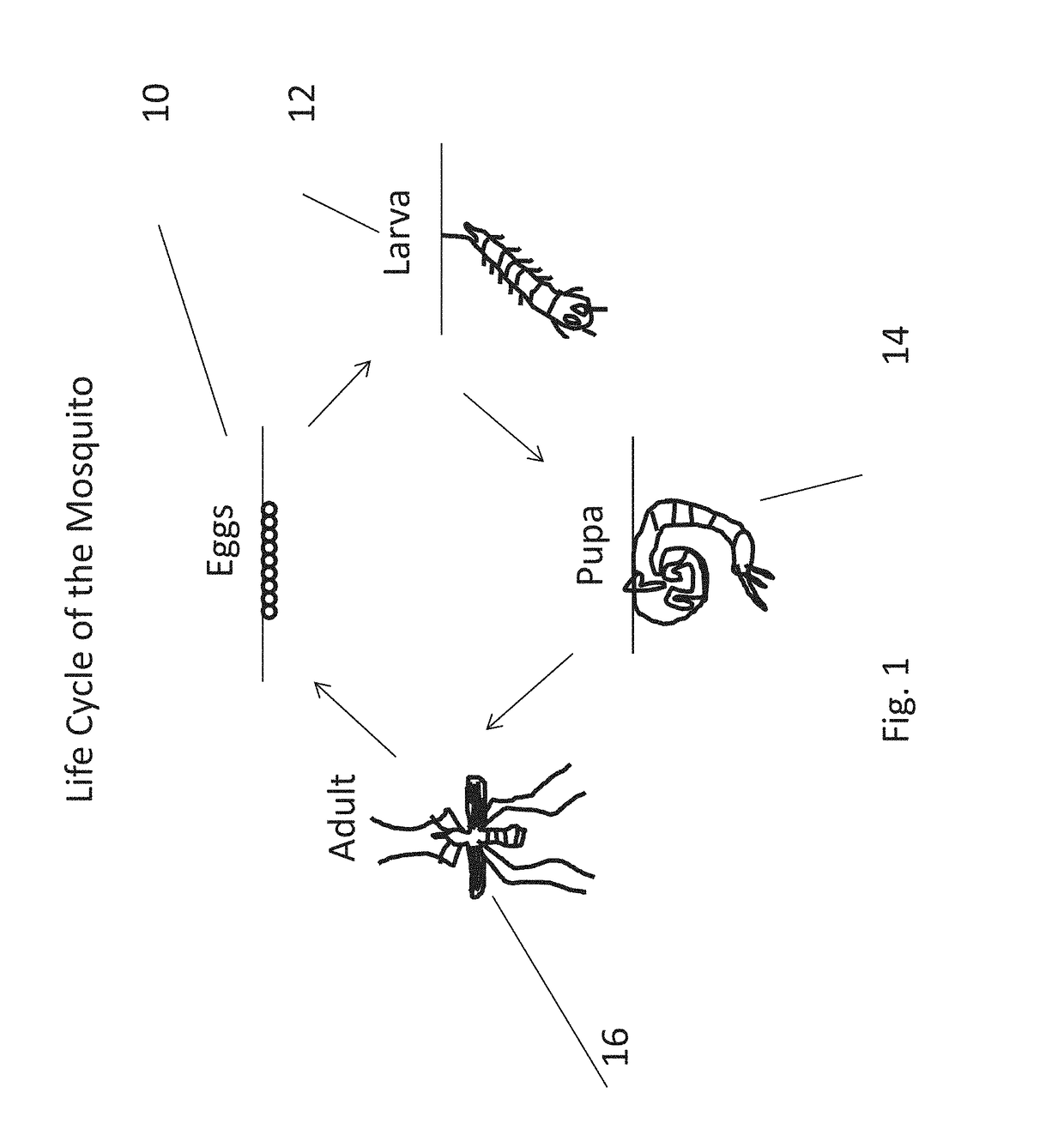Method for encapsulation and release of fragile insects
a technology for fragile insects and encapsulation, which is applied in the field of encapsulation and release of fragile insects, and can solve problems such as not being able to surviv
- Summary
- Abstract
- Description
- Claims
- Application Information
AI Technical Summary
Benefits of technology
Problems solved by technology
Method used
Image
Examples
example 1
[0175]Bubble strengthening solutions may be prepared with Polyvinyl pyrrolidone in Deionized Water (DW), Poly(styrene sulfonic acid co-Maleic acid) Na salt in DW and 2-hydroxy ethyl cellulose in DW. After mixing with Fairy® dishwashing liquid (5-10%) bubbles may readily form but only those from 2-hydroxy ethyl cellulose solution survive. Maximum bubble lifetime may be expected to be about 30 sec.
example 2
[0176]Glycerol may be added to the formulation with 2-hydroxy ethyl cellulose in example 1 thus prolonging bubble life to ˜60 sec.
example 3
[0177]In accordance with “The preparation of Sodium 9,10-Dibromostearate Solution” by A. L. Kuehrer (J. Chem. Edu., 35, 337, 1958) and “The chemistry and physics of Soap bubbles” by David Katz, a Sodium Oleate formulation may be prepared: 0.4 gr of NaOH may be dissolved in 96.8 gr of DW; 2.8 gr of Oleic Acid (Sigma) may be added and then stirred.
[0178]The resulting solution, ˜100 gr of 3% Sodium Oleate may be mixed with 100 gr of Glycerol until a homogeneous solution is obtained.
[0179]No bubbles form as result, but after mixing with Fairy (10%) stronger bubbles are formed. While this solution produces less bubbles upon blowing, when mixed with 2-hydroxy ethyl cellulose formulation (from example 1), it, produced bubbles with lifetimes of ˜70-80 sec.
PUM
 Login to View More
Login to View More Abstract
Description
Claims
Application Information
 Login to View More
Login to View More - R&D Engineer
- R&D Manager
- IP Professional
- Industry Leading Data Capabilities
- Powerful AI technology
- Patent DNA Extraction
Browse by: Latest US Patents, China's latest patents, Technical Efficacy Thesaurus, Application Domain, Technology Topic, Popular Technical Reports.
© 2024 PatSnap. All rights reserved.Legal|Privacy policy|Modern Slavery Act Transparency Statement|Sitemap|About US| Contact US: help@patsnap.com










